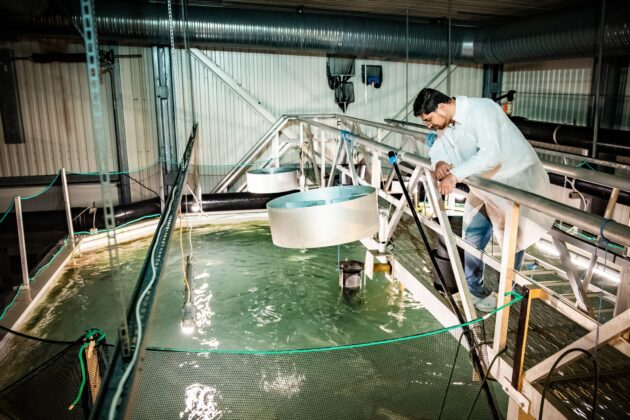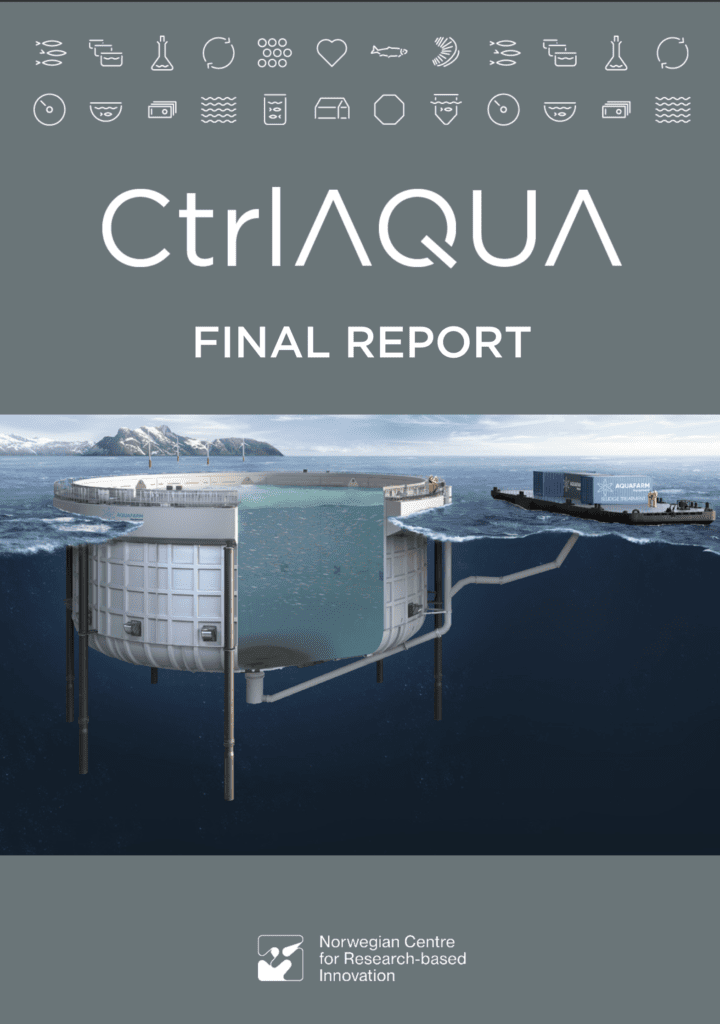CtrlAQUA
Centre for Research-Based Innovation in Closed-Containment Aquaculture

CtrlAQUA is a Centre for Research-based Innovation (SFI) that will lay the foundation for the development of closed-containment concepts of the future. With greater control of the production process, it will be possible to reduce problems associated with mortality and sea lice, and to reduce the production time for farmed salmon.
Start
01. Apr 2015
End
31. Mar 2023
Funded by
The Research Council of Norway
Cooperation
R&D: Norce, the University of Bergen, NTNU, the University of South-Eeastern Norway, Freshwater Institute (USA), Gøteborg Universitet (Sweden). Industry partners: Aquafarm Equipment AS, Atlantium, Bremnes Seashore AS, Cermaq Norway AS, CreateView, FiiZK, FISHGlobe AS, Grieg Seafood ASA, Lerøy Seafood Group ASA, Mowi ASA, Nekton AS, Pharmaq Analytiq AS, Pharmaq AS, and Pure Salmon Kaldnes AS. .
Project Manager(s):

Final report
CtrlAQUA SFI came to its end 31st March 2023.
In this final report we summarise activities in the centre during these years.
There are challenges that may hinder sustainable growth in salmon aquaculture, such as sea lice, diseases, escapes, and the loss of fish through production. Innovations in closed-containment aquaculture systems, where the salmon is separated from the outside environment by a tight barrier, is important for further development of aquaculture.
Goal
CtrlAQUA work on such closed-containment systems. The main goal is to develop technological and biological innovations that will make closed systems a reliable and economically viable technology. Closed systems can be land-based where water is recycled, or sea-based, in which large floating tanks receive clean water from depth. In CtrlAQUA the research deals with both approaches.
Post-smolt stage in focus
Focus lies on the most sensitive phases for the salmon in the production cycle, such as the first seawater phase, the so-called post-smolt stage. The main innovation is reliable and efficient production of post-smolts in closed systems on land or at sea. Thus, the industry can get a good realistic alternative or supplement to the current production technology with open cages.
The centre also contributes to better production control, fish welfare and sustainability in closed-containment farms. This happens through development of new and reliable sensors, minimizing environmental impact through recycling of nutrients and reduce the risk of escape, and diseases transmission to wild stocks.
These innovations are of value to the Norwegian society, since closed systems for strategic phases in salmon farming lead to increased value creation from aquaculture, increased number of jobs and production of healthy seafood.
Nofima AS is the host institution, and is collaborating with research partners from Norway and abroad, as well as several industry partners from the aquaculture industry and supplier industry.
Senior Scientist Åsa Espmark from Nofima at Sunndalsøra is director of CtrlAQUA.
Departments
In the centre there are three departments:
- Technology and environment, lead by Jelena Kolarevic, Nofima
- Preventative fish health, lead by Lill-Heidi Johansen, Nofima
- Fish production and welfare, lead by Tom Ole Nilsen, the University of Bergen
The University of Bergen has the principal responsibility for research education at the centre. The total budget for CtrlAQUA is NOK 199 million, spread over eight years.
Centre for research based innovation (SFI)
The SFI research centres are The Norwegian research council’s long-term initiative in innovative and strategically important areas.
Nofima is part of the following SFI centres:

Website
CtrlAqua has its own website where you can find news, publications, events and more.
Go to ctrlaqua.no
RAS research in Nofima
Nofima has unique facilities for doing research in recirculating aquaculture systems (RAS).
Take a look at what makes Nofima’s research relevant in future aquaculture industry.
Note! Make sure to click on the CC button to find English subtitles.
Publications
Research areas
Aquaculture systems
Topics
RAS technology
Research facilities
Nofima Centre for Recirculation in Aquaculture
Similar projects
Digitalisation for better assesment of fish welfare
Water treatment in RAS systems
Pathogen dynamics and disinfection in Atlantic salmon recirculating aquaculture system
Biologically driven automation of salmon production conditions in RAS
Life cycle study of Atlantic salmon with temperature and salinity as critical test variables
Establishing the code of best practices for Atlantic salmon gill health in a multifactorial world
Press release